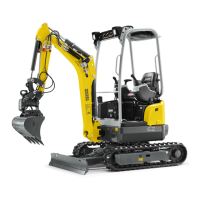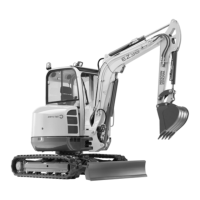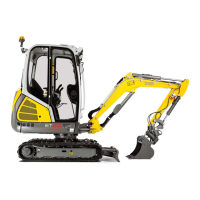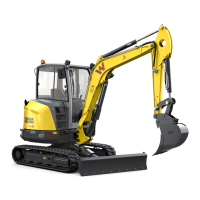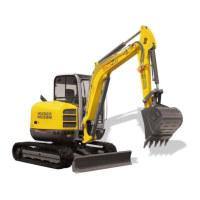OM 803 us – Edition 3.7 * 803b340.fm 3-81
Operation
Bucket position when digging
☞Move the bucket as shown in A.
➥Move the flat side of the bucket parallel to the ground.
Position B causes the bucket to penetrate into the ground. Work slows down, and
the engine and the hydraulic pump are subject to overload if this position is used
over a longer period of time!
Position C causes the bucket to be forced upward and not to be filled completely.
☞Excavate as follows:
• Penetrate into the ground with bucket D
• Lower the stick and at the same time align bucket E until
• reaching the required digging depth and
• the flat side of the bucket is parallel to ground
☞Pull bucket E parallel to the ground toward the excavator. At the same time, if possible:
• Move the stick toward the excavator
• Lower boom
☞With a sufficiently full bucket E:
• Keep on moving the stick toward the excavator and at the same time
• Curl stick F
Excavating trenches
• Excavating trenches is more efficient
☞by using a suitable bucket for this work and positioning the tracks parallel to the limit
line of the trench.
☞In case of large trenches, first excavate the side sections and then the center section.
Loading
• Loading in confined areas with a limited angle of rotation is more efficient
☞by positioning the transport vehicle so as to ensure maximum visibility of the transport
vehicle for the operator of the excavator.
• Loading material onto transport vehicles is more efficient
☞if the excavator is at the rear end of the transport vehicle and not at the side.
Fig. 177: Bucket position
A
B
C
Fig. 178: Penetrating into the ground with the bucket and
D
E
Fig. 179: Filling the bucket
E
F
Fig. 180: Excavating trenches
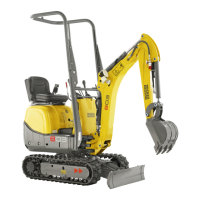
